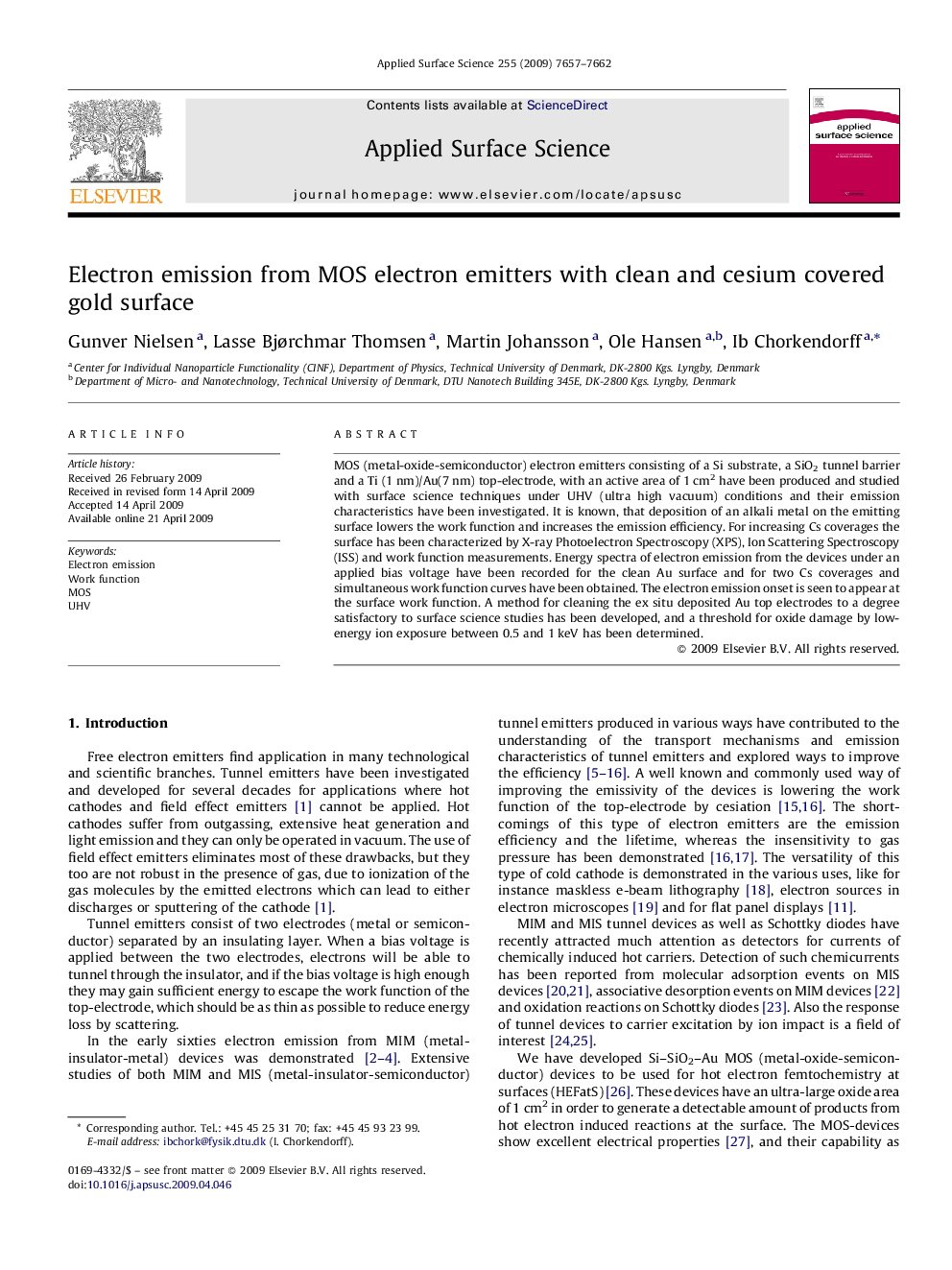| Article ID | Journal | Published Year | Pages | File Type |
|---|---|---|---|---|
| 5366851 | Applied Surface Science | 2009 | 6 Pages |
MOS (metal-oxide-semiconductor) electron emitters consisting of a Si substrate, a SiO2 tunnel barrier and a Ti (1Â nm)/Au(7Â nm) top-electrode, with an active area of 1Â cm2 have been produced and studied with surface science techniques under UHV (ultra high vacuum) conditions and their emission characteristics have been investigated. It is known, that deposition of an alkali metal on the emitting surface lowers the work function and increases the emission efficiency. For increasing Cs coverages the surface has been characterized by X-ray Photoelectron Spectroscopy (XPS), Ion Scattering Spectroscopy (ISS) and work function measurements. Energy spectra of electron emission from the devices under an applied bias voltage have been recorded for the clean Au surface and for two Cs coverages and simultaneous work function curves have been obtained. The electron emission onset is seen to appear at the surface work function. A method for cleaning the ex situ deposited Au top electrodes to a degree satisfactory to surface science studies has been developed, and a threshold for oxide damage by low-energy ion exposure between 0.5 and 1Â keV has been determined.
